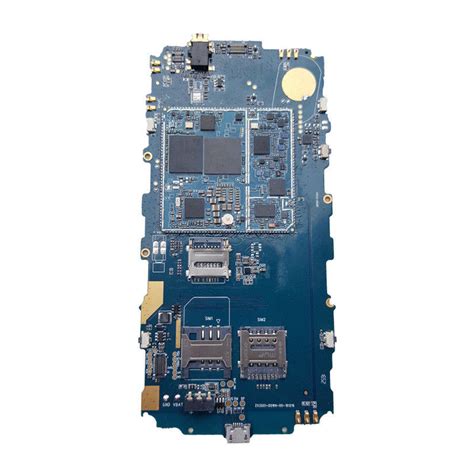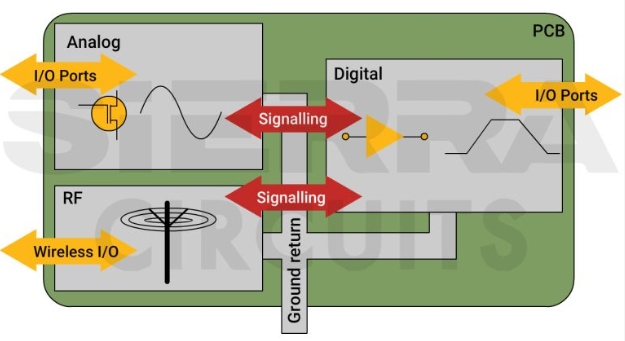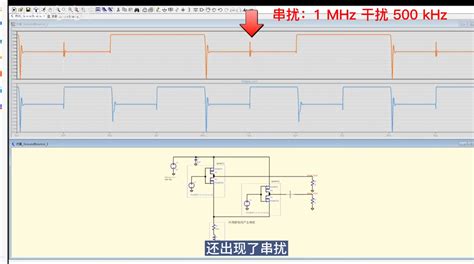Unlocking Innovation: The Power of Custom PCB Assembly
Key Takeaways
Custom PCB assembly plays a pivotal role in revolutionizing technology and design across numerous sectors. By embracing pcba techniques, companies can tailor circuit boards to meet specific project requirements, resulting in enhanced functionality and efficiency. The benefits of custom PCB assembly extend beyond mere adaptation; they include optimization of space, improved durability, and better thermal management, all essential characteristics for today’s high-performance electronics. The process of pcb assembly begins with an understanding of client needs followed by collaborative design efforts that use advanced tools and techniques to ensure precision. As industries increasingly prioritize innovation, the custom nature of these circuits allows for the integration of cutting-edge features that can differentiate products in a competitive market. Furthermore, custom pcba solutions are not only about addressing current demands but also about anticipating future trends in technology, paving the way for sustainable growth and continuous improvement. By incorporating these customized circuit boards into their products, businesses can significantly enhance their operational capabilities and drive success across various applications. Through innovative applications and comprehensive case studies, the transformative impact of custom PCB assemblies becomes clear, showcasing their vital importance in shaping modern technological landscapes.
Introduction to Custom PCB Assembly: An Overview of Its Importance
Custom PCB assembly is a critical component of modern technology, shaping how devices are designed, built, and function. In today’s fast-paced technological landscape, the demand for personalized and optimized solutions has led to the increased significance of PCBA (Printed Circuit Board Assembly). Tailored pcb assembly allows manufacturers to create circuit boards that meet specific needs, whether for consumer electronics, medical devices, or automotive technology. This customization not only enhances performance but also helps to reduce costs by minimizing material waste and streamlining production processes.
As industries evolve, the role of custom PCB assembly expands. It directly influences product efficiency and innovation, enabling businesses to stay competitive in their respective markets. Employing advanced technologies in custom PCBA opens up new possibilities for intricate designs that are difficult to achieve with standard boards. Companies now face the unique challenge of balancing performance with production scalability—an area where custom solutions shine.
“The power of custom pcb assembly lies in its ability to drive forward-thinking designs while catering to market demands.”
Understanding the intricate processes involved in custom PCB assembly can significantly enhance product quality and reliability. From prototyping through full-scale production, each step must be carefully executed to ensure optimal functionality. Moreover, by leveraging tailored approaches, organizations can unlock innovations that traditional methods simply cannot provide.
In summary, the increasing reliance on custom PCBA underscores its importance across various sectors. This trend fosters an environment ripe for innovation and creativity while addressing specific consumer needs with precision and efficacy.
The Benefits of Custom PCB Assembly in Technology Innovation
Custom PCB assembly plays a crucial role in fostering innovation within the technology sector. By allowing for the creation of tailored circuit boards, pcba empowers designers and engineers to push the boundaries of what is possible. One of the primary benefits of custom PCB assembly is the ability to optimize performance and functionality specific to unique project requirements. This adaptability enables solutions that are not only more efficient but also more cost-effective in the long run.
Moreover, pcba facilitates enhancements in design flexibility, allowing for intricate layouts that standard solutions may not support. As technologies become more complex, products increasingly benefit from custom PCB assembly, which can integrate advanced features while minimizing size and weight. This capability is essential, particularly in industries where space optimization is a priority, such as in aerospace or consumer electronics.
Additionally, utilizing custom PCB assembly can lead to reduced time-to-market. With the integration of specific components and features tailored for particular applications, companies can expedite their development processes, resulting in faster innovation cycles. By aligning closely with their business goals and technical requirements, organizations can derive a competitive advantage through bespoke circuit solutions.
In essence, harnessing the potential of custom PCB assembly not only enhances product quality and functionality but also accelerates technological advancement across various sectors. The transformative impact of this innovation is profound as it continues to shape the future landscape of technology development.
Understanding the Custom PCB Assembly Process: Step-by-Step
The custom PCB assembly process is both intricate and crucial for the successful development of innovative electronic solutions. It begins with design—the stage where engineers convert initial concepts into detailed schematics. Using advanced software tools, they define the layout of the circuit board, ensuring that all components fit and function cohesively. Once designs are finalized, the next step involves sourcing materials. Selecting high-quality parts is essential for ensuring durability and performance in the final product.
After procurement, fabrication takes place, where raw materials are transformed into printed circuit boards (PCBs). This process includes etching copper layers onto a substrate to create conductive pathways, followed by drilling holes for components. It’s a meticulous task requiring precision to ensure optimal functionality. The subsequent phase of assembly involves placing surface mount devices (SMD) and through-hole components onto the PCBs using techniques such as reflow soldering and wave soldering. Each technique is tailored to specific requirements based on component types.
Once assembly is complete, rigorous testing is performed to identify any defects or irregularities that might impact performance. These tests can range from visual inspections to advanced electrical testing methods aimed at validating functionality and reliability. Throughout this phase, quality control protocols are indispensable in maintaining industry standards.
In summary, navigating through each step of the custom PCB assembly process—designing, sourcing materials, fabricating boards, assembling components, and conducting thorough testing—is vital for delivering reliable products. This meticulous approach not only enhances technological innovation but also ensures that the final PCBA meets client specifications and industry demands effectively.
Applications of Custom PCBs Across Various Industries
Custom PCB assembly plays a pivotal role in a multitude of sectors, driving innovation and enhancing functionality. In the electronics industry, tailored pcba solutions enable the development of compact and efficient devices. These boards are essential in creating everything from smartphones to complex medical instrumentation, where precision is crucial. The automotive sector has also embraced custom pcbs, utilizing them for advanced driver-assistance systems (ADAS) that prioritize safety and performance. Furthermore, in the field of telecommunications, bespoke pcb assemblies help optimize signal processing, ensuring faster data transmission and connectivity.
Manufacturers are leveraging custom pcb assembly to create unique solutions for IoT devices, providing smart applications that enhance everyday life. In aerospace and defense, where reliability is paramount, expertly crafted pcba ensures that even in extreme conditions, electronic components function seamlessly and withstand rigorous testing. The versatility of custom pcbs extends to renewable energy solutions as well, facilitating the design of efficient solar panels and wind energy systems.
In summary, the applications of custom pcb assembly are extensive and transformative, serving as foundational elements that support innovation across various industries. By catering to specific needs through tailored designs, these circuit boards not only enable functionality but also foster advancements that shape the future of technology.
Case Studies: Transformative Impact of Custom PCB Assemblies
Custom PCB assembly has revolutionized many sectors by providing tailored solutions that meet specific needs. In the automotive industry, for instance, custom PCBA is essential for developing advanced driver-assistance systems (ADAS). These systems rely on intricate circuitry that optimizes safety features such as lane-keeping assistance and collision detection, showcasing how targeted designs can enhance vehicle performance and safety. Similarly, in the medical field, the use of custom PCB assembly has led to significant advancements in diagnostic equipment. Devices tailored with specialized circuit boards enable more accurate readings and faster diagnostics, ultimately improving patient care and outcome.
Furthermore, the consumer electronics sector benefits immensely from custom PCBs. The integration of bespoke assemblies in devices such as smartphones and smart home systems ensures they remain cutting-edge and capable of meeting increasing consumer expectations. Each design iteration can be optimized for efficiency and functionality, illustrating how rapid innovation is facilitated through flexible PCB solutions. These case studies highlight not only the practical applications but also the transformative impact of custom PCBA across industries—showing that when technology meets tailored design, the results can be groundbreaking.
Future Trends in Custom PCB Design and Manufacturing
The landscape of custom PCB assembly is evolving rapidly, driven by advances in technology and the increasing demand for specialized applications. One notable trend is the shift towards sustainability. As industries strive to meet eco-friendly standards, pcb assembly processes are incorporating green materials and production techniques, significantly reducing waste and energy consumption. Moreover, the rise of IoT (Internet of Things) devices is pushing manufacturers to design pcba that are smaller, more efficient, and packed with functionality.
Another trend gaining traction is the integration of automation in the custom PCB assembly process. Utilizing advanced robotics and AI-driven technologies not only improves accuracy but also accelerates production timelines. With these changes, manufacturers can achieve lower costs while maintaining high standards of quality. Furthermore, as 5G technology becomes increasingly prevalent, there’s a growing need for pcba that can support higher frequencies and data transfer rates.
To present these trends effectively, consider the following table:
| Trend | Description | Impact on Industry |
|---|---|---|
| Sustainability | Use of green materials in pcb assembly | Reduces waste & energy consumption |
| Automation | Integration of robotics in manufacturing processes | Improves accuracy & production speed |
| Miniaturization & Efficiency | Development of smaller devices for IoT | Higher functionality in compact designs |
| Support for 5G Technology | Design adaptations to meet higher frequency needs | Enables advanced communication systems |
In conclusion, these future trends not only influence the custom PCB manufacturing landscape but also shape how industries innovate and operate. Adapting to these changes will be essential for companies looking to maintain a competitive edge in an increasingly interconnected world.
Challenges and Solutions in Custom PCB Assembly Projects
Custom PCB assembly projects often encounter a range of challenges that can impact timelines, costs, and overall product quality. One prevalent issue is the complexity of designing PCBA for unique applications, where specific performance criteria must be met. This complexity can lead to design errors or incompatibilities in components. A solution to this is adopting advanced simulation software during the design phase, allowing engineers to visualize potential issues before physical prototypes are made. Additionally, supply chain disruptions can affect the availability of critical components needed for assembly. To mitigate this risk, companies are increasingly turning to strategic partnerships with multiple suppliers, ensuring that they have alternative sources for essential parts. Another significant challenge lies in achieving high-volume production without compromising on quality. Implementing comprehensive quality control measures throughout the pcb assembly process helps maintain standards. Regular audits and utilizing automation in the assembly line can enhance efficiency while safeguarding quality. By addressing these challenges proactively, companies can leverage custom PCB assembly to drive innovation effectively and remain competitive in fast-evolving markets.
Conclusion
In summary, custom PCB assembly plays a crucial role in fostering innovation across various fields, significantly enhancing the functionality and efficiency of electronic devices. The tailored nature of PCBA allows designers and engineers to create circuit boards that not only meet specific performance requirements but also adapt seamlessly to the unique needs of individual projects. This level of customization empowers industries—from consumer electronics to medical devices— to push boundaries and develop groundbreaking solutions. As technology continues to evolve, the ability to harness pcb assembly effectively will be a key driver in enabling next-generation products, enhancing performance, and ensuring reliability. Companies that invest in custom PCB assembly will likely find themselves at the forefront of technological advancement, poised to capitalize on emerging trends and stay competitive in an ever-changing marketplace.
FAQs
What is custom PCB assembly?
Custom PCB assembly refers to the process of creating tailored printed circuit boards that meet the specific requirements of a project. This involves designing and assembling PCBs with precision components and configurations to facilitate unique functionalities.
Why is custom PCB assembly important in technology innovation?
Custom PCB assembly, or PCBA, plays a crucial role in driving technology innovation by enabling designers to create specialized products. This flexibility allows industries to adapt quickly to changing market demands and technological advancements.
What are the common applications of custom PCBs?
Custom PCBs are extensively used across various industries, including telecommunications, automotive, medical devices, and consumer electronics, making them essential for ensuring optimal functionality in diverse applications.
How does the custom PCB assembly process work?
The PCBA process typically includes design layout, procurement of materials, component placement, soldering, testing, and final assembly. Each step is critical to ensuring that the finished board functions as intended.
What are the benefits of using custom PCB assembly?
Tailored PCB assemblies offer several advantages such as increased performance efficiency, reduced overall costs due to minimized waste, greater design flexibility, and the ability to meet specific regulatory requirements.
For more information on how custom PCB assemblies can elevate your projects and innovations, please click here: Andwin PCB Assembly.







